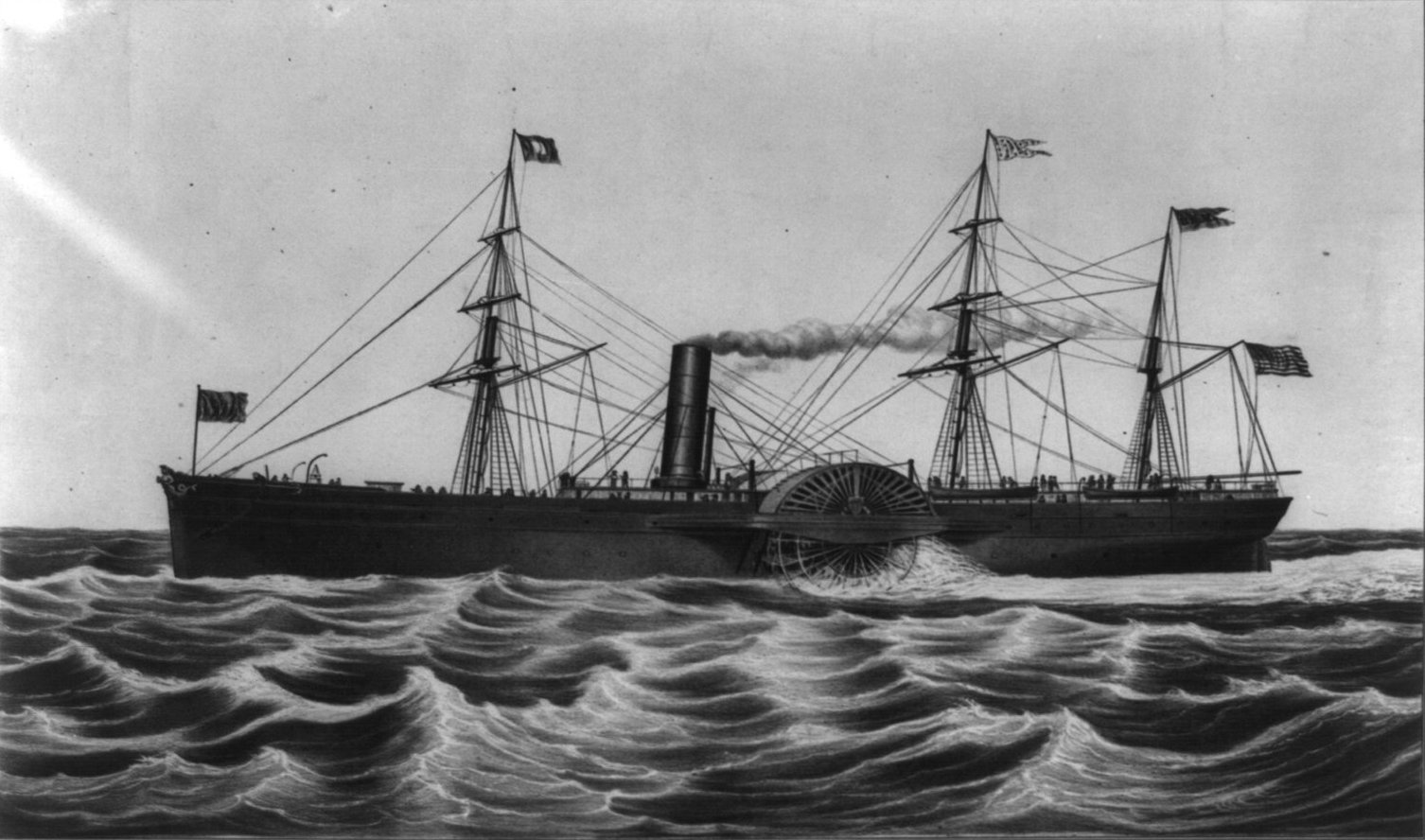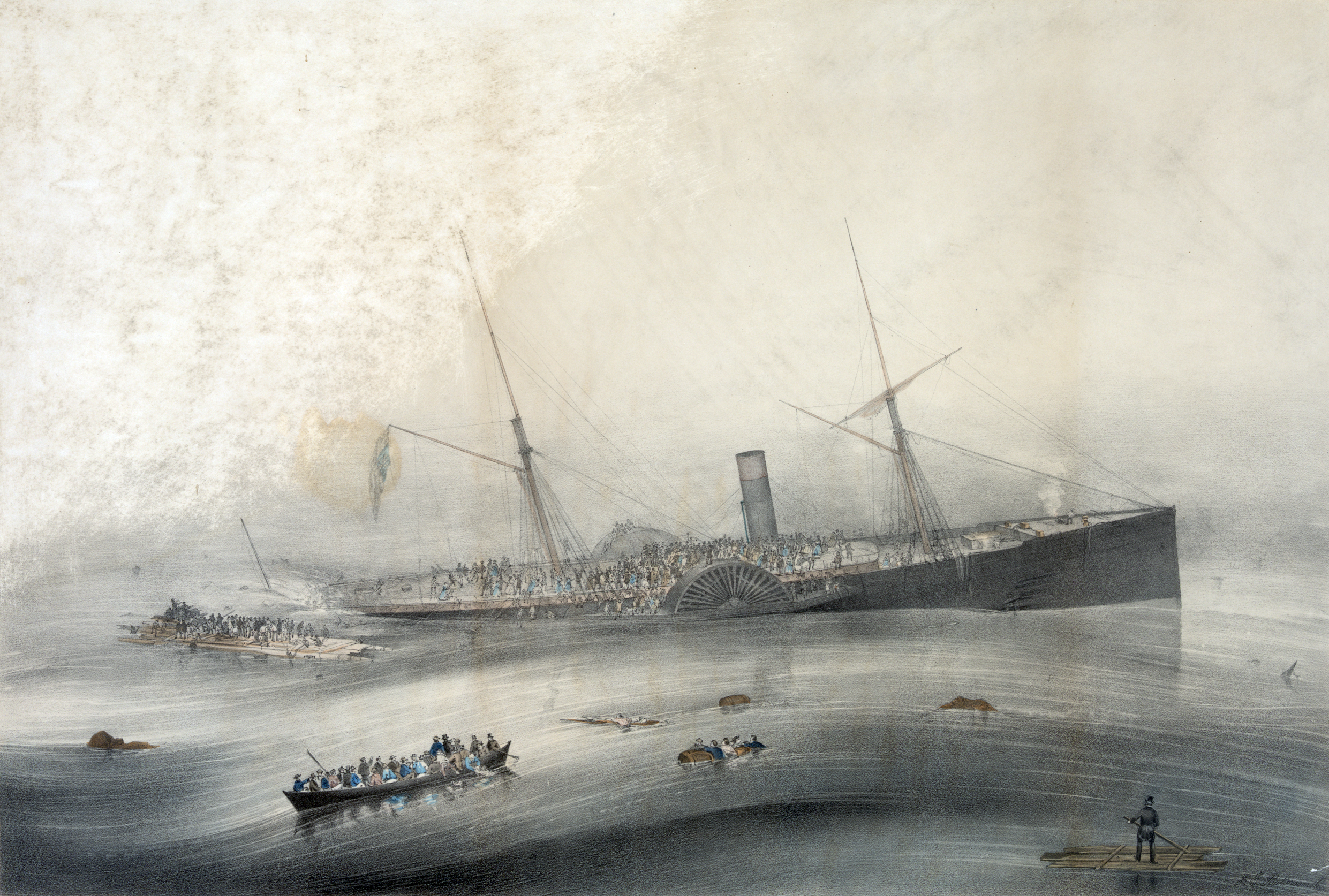SS Arctic
American ocean liner and paddle steamer lost in a collision off Newfoundland in 1854.
Year Built
1850
Year Sank
1854
Depth
485 ft (147.8 m)
Difficulty Level
Technical

The US Mail steamship Arctic if the Collins Line.
SS Arctic
Wreck Location
The Arctic lies on the Grand Banks of Newfoundland over 50 miles southeast of Cape Race. Elevation readings of the sea floor show the wreck to lie in 485 feet of water, making it only possible to dive technically, as 485 feet is almost impossible scuba diving wise.The water is also very cold and likely has a bit of a current, given the gulf stream passes through the area. The exact position of the wreck isn't known. What is known is the exact position of where the Arctic collided with the Vesta and that the Arctic was sailing at full steam (which is about 13 knots) northwest towards Cape Race after the collision, but ultimately ground to a halt within an hour after the collision. The wreck has never been found or explored.
~ GPS Shipwreck Location ~
Latitude: 46° 15' 14.5008" N Longitude: -52° 37' 14.4984" W
Description

The Arctic was a wood hulled paddle steamer and ocean liner built in 1850 by William H Brown Shipyards in New York for the New York and Liverpool Mail Steamship Company or as it was better known as the Collins Line. Unlike most major ocean liners prior to the end of the first World War, Arctic and her fleetmates were American flagged, owned and operated vessels. She had three auxiliary sail rigged masts, a single funnel and a steam engine powering two paddle wheels amidships. The Arctic was built to highly luxurious standards. She captured the eastbound speed record in 1852, becoming the fastest ship on the north Atlantic. A crossing on the Arctic could take as little as nine days. In 1854, her engines were overhauled to burn less coal and make Arctic more profitable to operate. However, the new engine caused the hull of the Arctic to take on more damage and strain making maintenance more difficult, but it did make the Arctic a far more fuel efficient vessel to operate.
Disaster struck on September 27, 1854. The Arctic was mostly finished with a transatlantic voyage from Liverpool to New York when she collided with the French iron steamship Vesta in dense fog off Cape Race, Newfoundland at noon that day. Originally, Captain Luce of the Arctic thought the Vesta was going to sink, but upon further inspection, the Vesta was still afloat thanks to her watertight compartments. Arctic on the other hand had been fatally wounded and had no compartments. After futily trying to plug up the hole in Arctic's side, Captain Luce decided to head for Cape Race at full steam. The desperate and pathetic attempt to save the vessel only helped to flood her hull more. The boilers were extinguished by the incoming sea and her engines stopped for the last time.

Just an hour after the collision, Arctic had steamed less than 15 miles southwest of where the collision had occurred and was taking on water at an alarming rate. One of the six lifeboats had been left behind in an un-needed attempt to assist the Vesta. The other five were against orders comandeered by crewmembers and male passengers who shoved the women and children aside. With the lifeboats gone, Captain Luce ordered the construction of a raft to carry the remaining passengers aboard to safety. The makeshift rafts built did no good. Ship's engineer Stewart Holland continued firing the ship's distress cannon to hopefully attract a rescue vessel. 3 hours later, the Arctic sank stern first taking with her 300 people. Not a single woman or child survived the sinking and only 24 passengers survived. Some of the lifeboats launched vanished without a trace while two made it to shore. Other survivors including Captain Luce were picked up out of the water by passing vessels. Many crewmembers who survived the sinking remained emigrated to Canada. Among the dead included the wife and two children of Edward Knight Collins, owner of the shipping line.
Footnotes
The Collins Line was the first major attempt by the United States to establish a passenger ship dominance on the Atlantic Ocean. Founded by Edward Knight Collins, it was backed by the United States government and competed heavily with the British owned Cunard Line. Following the loss of the Arctic in 1854, the disappearance of the Pacific with all passengers and crew in 1856 as well as the economic failure of the Adriatic, the line went into bankruptcy and ceased operations. The steamers Atlantic and Baltic were purchased by the Pacific Mail Steamship Company and temporarily restarted transatlantic service, but the American owned Pacific based steamship company was driven off the North Atlantic almost immediately by a very aggressive Cunard Line.